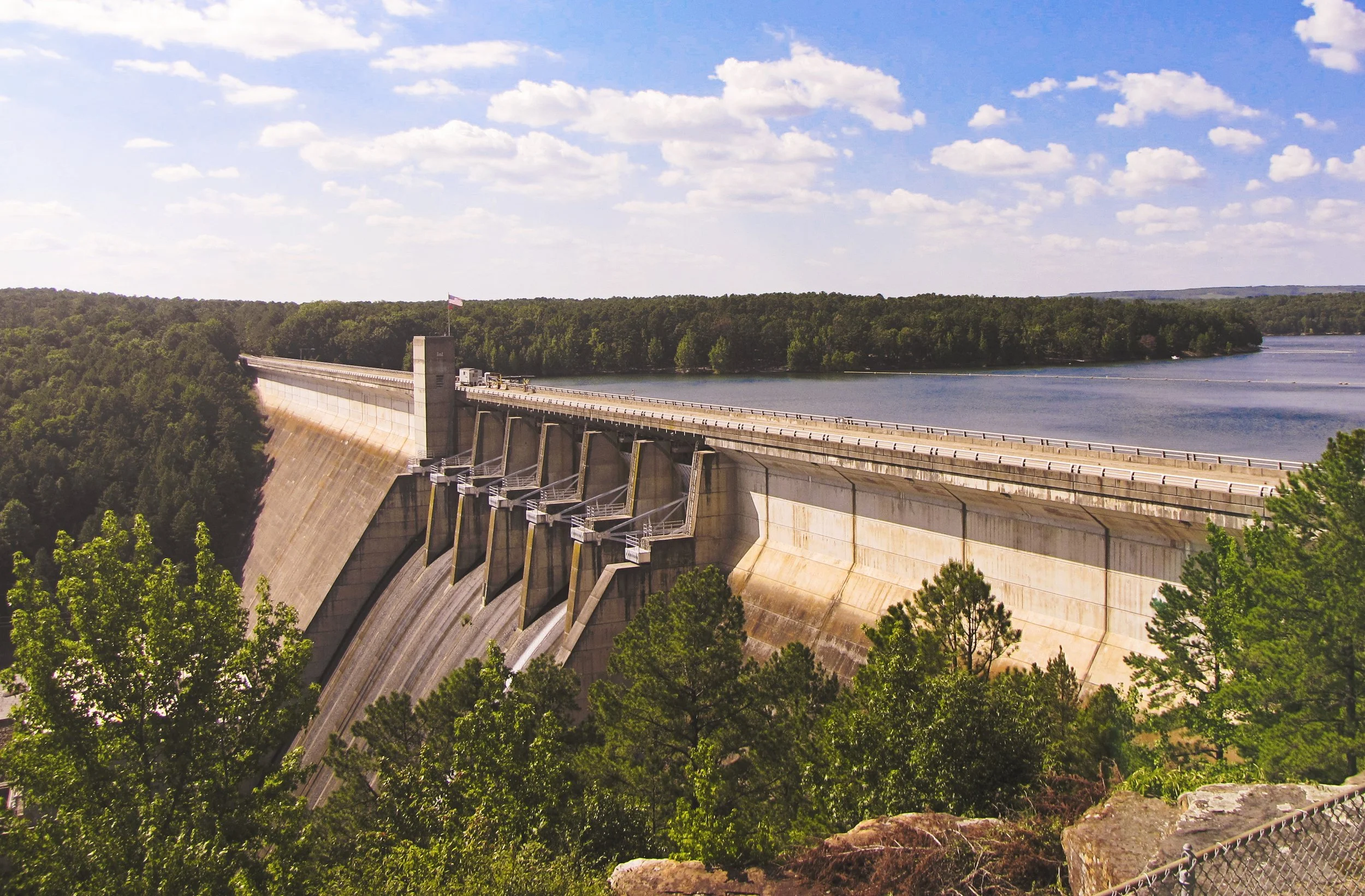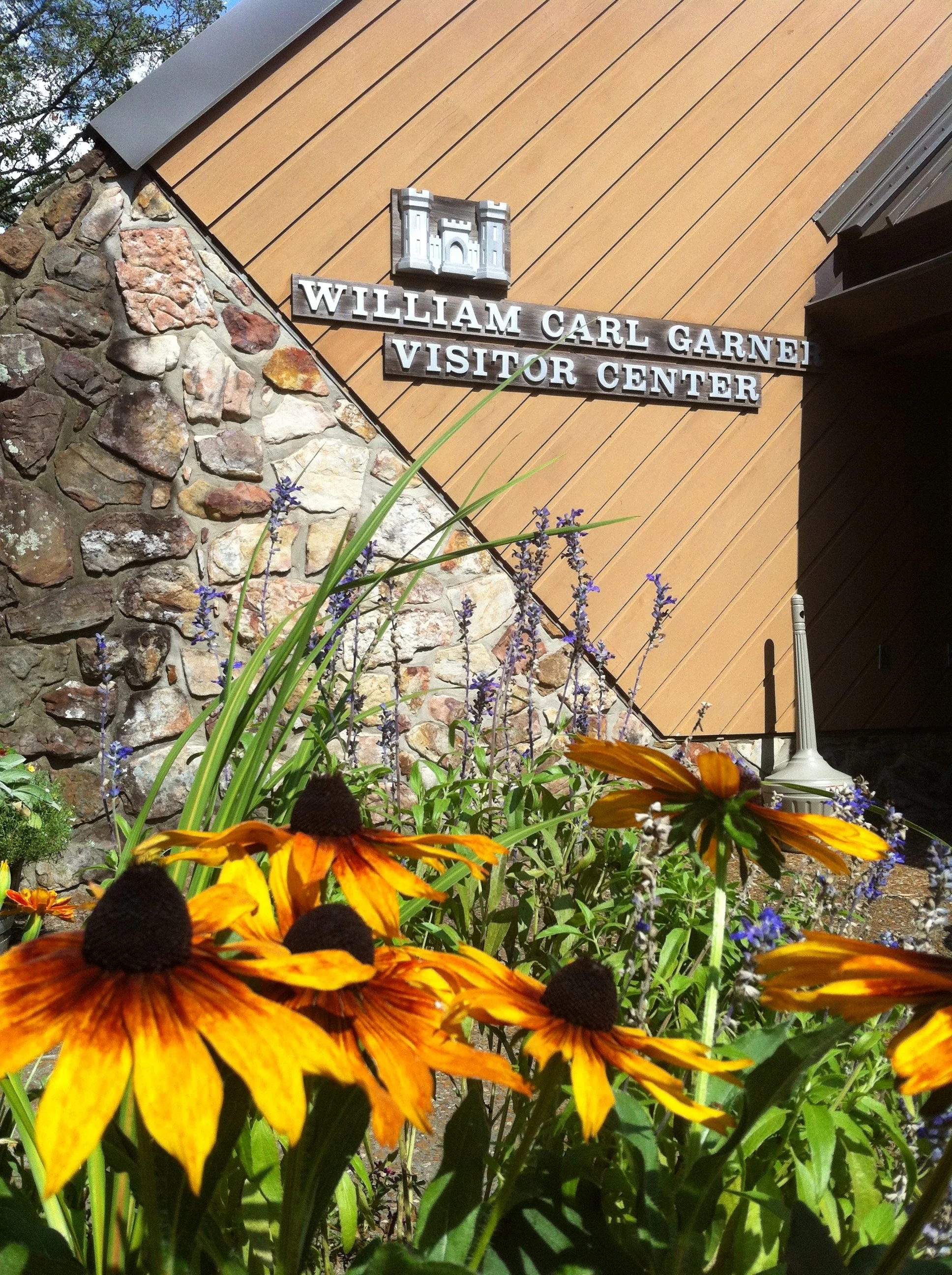Damn Tourists
The Little Red
The Little Red River rolls out from the bottom of Greers Ferry Lake at a chilling 48 degrees year-round. In the early 90s, a local man, a retired lieutenant colonel named Rip Collins, caught the world-record brown trout there.
Rip was down by the old Swinging Bridge on Mother's Day 1992, testing an outboard motor, when he spotted a beaver hut. Now, Rip was a fly-fisherman. That day, he grabbed a spinning rod and a marabou jig in olive green, the color of the Little Red. Collins cast it out, making it dance.
A good fisherman can jimmy the jig, making it swim in a lithe movement like minnows. A great fisherman maintains a blend of hopeful optimism, patience, and steady intuitiveness. They predict the direction of the fish, anticipating where it needs to land next.
Brown trout averages between two and ten pounds. Rip's came in at forty pounds, four ounces. He wasn't just a great fisherman – he was legendary, with his world record standing until 2009. Excitedly, the town of Heber Springs posted pictures at every dock and marina downriver. Rip standing in the waist-deep waters holding all his glory, wearing waders, a red fishing shirt, and a look of complete surprise. The community talked about it for years, eventually naming a trail and creek after him – about the highest honor one could receive in The Natural State. Every angler and tourist could witness greatness and a fish of myths while planning to catch their own.
William Carl Garner Visitor Center
On break from college, I worked at the William Carl Garner Visitor Center with Sam, my classmate and friend. Located in a dip in the road before crossing the Greers Ferry Dam in north-central Arkansas, our official address was 700 Heber Springs Road North. On the phone, we simply said "just before or after the dam," depending on the caller's direction.
The Visitor Center was housed in a unique A-framed brown tin roof building. The bottom third of the roof was lined with large, smooth river rocks, giving it a natural, rustic appearance. The building blended well, almost disappearing, into the scenery of tall pines and old azaleas that dotted the obsessively manicured grass. Maples lined the small parking lot, marking the change of season with their colors.
Our official job title, Interpreter, stood out, carved into red plastic tags pinned to our chests. Due to the shoulder patches on the dark uniforms, some folks thought we were police, and others assumed we were park security. We were the welcoming crew.
The black multi-line telephone rang through the silence of the Saturday afternoon. Halfway through saying "thank you for calling," a woman's shrill scream traveling a hundred miles per hour crashed into my ear.
Covering the phone's mouthpiece, I turned to my left, "Oh hell, Sam, we gotta lady up on the phone. Screaming bloody murder about a black bear wandering through Damsite." Damsite, one of the more popular parks due to its cliffs used for bluff jumping, was currently at full capacity.
"Mm-hmm," he replied, unperturbed.
"Hey Sam," I said with growing concern, "get the rangers on the phone! Get somebody over there before that bear gets hurt." I glared at him sitting in his chair with his khaki-covered legs, permanently crooked and bent from the palsy, propped up on the large wooden desk. His boots tapped side to side, following an imaginary beat. Finally, the comment about the bear getting hurt woke him from his whittling. Setting down his knife, he disappeared into the back office, I assume to make the call.
Returning to the phone and the nonsensical hollering, I replied, "Yes, ma'am." I sighed, listening. Damn tourists.
Small Town Life
The good and bad thing about a small town is that everyone knows everyone else. For instance, Sam and I met one day at Precious Moments Daycare. We were three, maybe four, in the days that tasted like peanut butter and smelled like paste. A core group of us grew up together, listening to Sam’s wisecracks while he made asides to philosophy, math, or chemistry. Strangers underestimated him, due to his physique and country drawl, despite the fact he tended to be the most intelligent person in the room.
Returning to his chair, Sam picked up his knife and whittling stick. Old Rex Harral stopped by one day, gifting us handmade whittling knives resembling prison shivs. On the back, in black ink, Rex scrawled his full name, phone number, and "Wilburn, Arkansas," the township of his birth.
Rex was generationally old. Meaning he was old when my daddy was a youngster, back in the 60s. I'm not sure how old he was now, but years of farming, woodworking, and general outdoor labor kept him spry and sharp, skin leathery from the sun. We loved his visits. Rex, a walking community historian, generally left us with a random tidbit of knowledge. Today it was about the grass growing outside – zoysia Z-52 – and how it grew so well, despite drought or oppressive heat. Useful information for us, as we regularly received calls about it.
Historical Interpreters
Our job meant welcoming strangers to our neck of the woods, the lake, and the river. We provided instructions on where to stay and what to do, where to fish and how to catch it, hiking spots, hole-in-the-wall eating spots, and the plants and critters to watch out for. And we dealt with emergencies, like bears, boaters, and, the most dangerous, Fourth-of-Julyers – a bunch of drinkers now armed with explosives in the dark.
We gave tours of our facility, recounting history and pointing out the photo of Rip and his catch. We talked about shallow seas that once covered the area, littering the ground with intricate fossils in seashell shapes of all sizes. We talked about the snakes on the ground, the cottonmouths in the water, and the birds in the sky. Pointing to a glass case, saying, "Like this hoot owl that got hit by an eighteen-wheeler but didn't get crushed. The Game and Fish stuffed it so people could take a gander. Here, take a gander! They did a real good job of putting it back together!" That line was more memorable than saying it was a Barred Owl, native to the area, on a nighttime hunt for rabbits and heading in the wrong direction. People peered in closely, almost studiously. Many were impressed, others aghast, but most were fascinated by the creature and its origin story.
At the tour’s end, we played a twenty-minute film called The Saga of the Little Red. The film covered the Ozark region’s history, Cleburne County’s development, and the construction of the Greers Ferry Lake Dam. Travelers listened as the film recounted over two hundred years, including a historic Thursday on October 3, 1963.
President John F. Kennedy made his last public appearance in Heber Springs, Arkansas, before his fateful trip to Dallas on that day. Kennedy dedicated the dam, a project thirty years in the making, and praised the hard work of the people who built it. Its creation aided in the region's flood control while generating hydroelectric power.
Kennedy (The American Presidency Project, 1963) reminded the folks that day that:
"This is a great country that was given to us and a great land. It is our job, it seems to me, to make the most of it, to make sure that we in our time plant our forests, use our water, develop our power, provide recreation for our people, do in our time to…make it possible for those who come after us to have a better life."
Standing in the crowd that day, listening to Kennedy's remarks, stood another Kennedy. Robbie was no relation to the President, she just shared his last name. The name became my father's name and mine for a time. Granny Robbie listened as the President spoke in her direction in a diction faster and unusually accented for a southern woman's ears. Kennedy's vision was for something other than today or tomorrow. It was for the future, for people a glimpse of a lifetime away, a quarter century down the road.
A quarter century came and went. Over fifty years later, Heber Springs still provided evidence of Kennedy's vision. Over the years, the dam increased travel, and the establishment of Corps of Engineers parks led to tourism, so much that the local economy transformed, entirely relying on it. Hence, the visitor center where I worked.
When the New Zealand boys stopped by to ask how to catch a brown trout, I told them the truth.
"Well, these aren't a powerbaiting fish. I mean, you can try it. You'll get a few, but you'll have far better luck with some marshmallows and corn."
Confused, they looked at Sam, asking him the same question. "Mm-hmm," he replied, unperturbed.
I watched as they made their way out into the parking lot and turned, with a grin, before saying, "Aw hell, Sam, these fools ain't gonna catch a damn thing." Smiling, he slowly shook his head.
Damn tourists.



